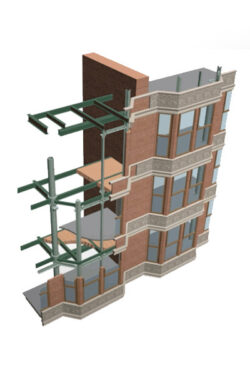Historian Thomas Leslie, revisits the fabled architectural rivalries of America’s largest and most innovative cities. His talk keeps a tight focus on the key decades of the 1870s, the beginning of the end of “the age of masonry,” and the dawn of mass-production of rolled steel I-beams, which from the mid-1880s offered new economies for construction. Yet the eventual marriage of masonry and metal took time to birth the full steel skeleton, often called “the Chicago frame.”
Leslie explores the ways that traditional bearing walls enlarged window openings to illuminate interior workspaces until the wall became, in effect, a frame, and how hybrid systems of “cage construction” served practical purposes and were slow to disappear in practice. He emphasizes how construction moved toward industrial materials to reduce the cost of skilled labor, especially bricklayers. In Friedman’s succinct formulation: modern structure is industrialized structure.
This program builds on several past lectures at The Skyscraper Museum by the speaker: the videos of these previous talks are highly recommended as background for this discussion.
Thomas Leslie, Chicago Skyscrapers, 1871-1934.
Thomas Leslie
Thomas Leslie is the Morrill Pickard Chilton Professor in Architecture at Iowa State University where he researches the integration of building sciences and arts, both historically and in contemporary practice. He is the author of Chicago Skyscrapers, 1871-1934 (Champaign: University of Illinois Press, 2013), and is currently writing its sequel Chicago Skyscrapers, 1934-1985. A winner of the 2013 Booth Family Rome Prize in Historic Preservation and Conservation at the American Academy in Rome, he is also at work on a study of the Italian engineer and architect Pier Luigi Nervi.
